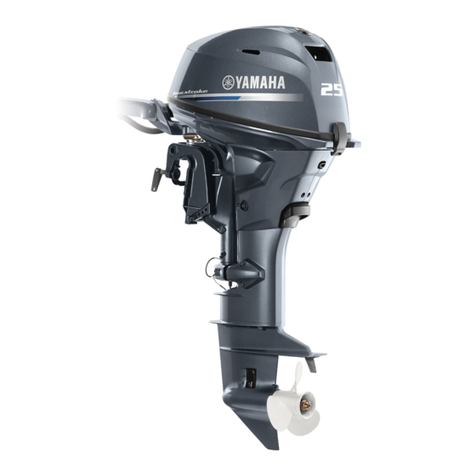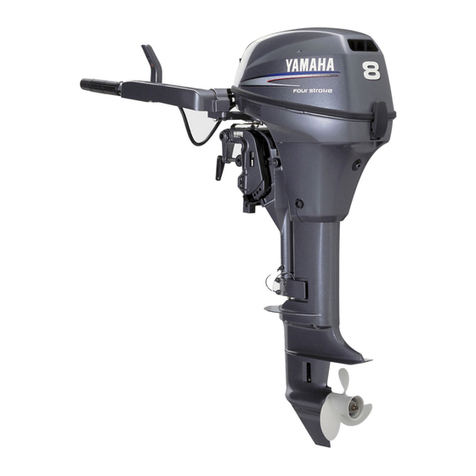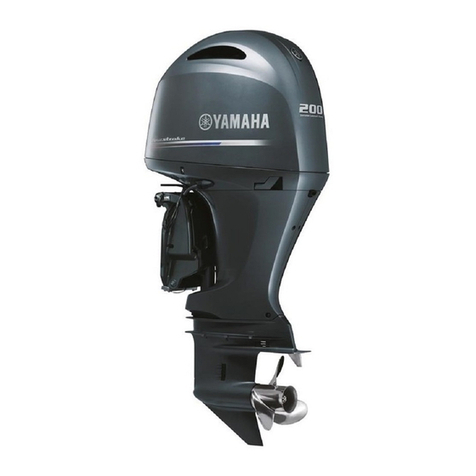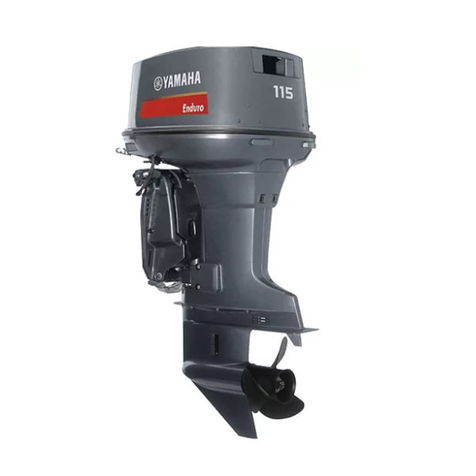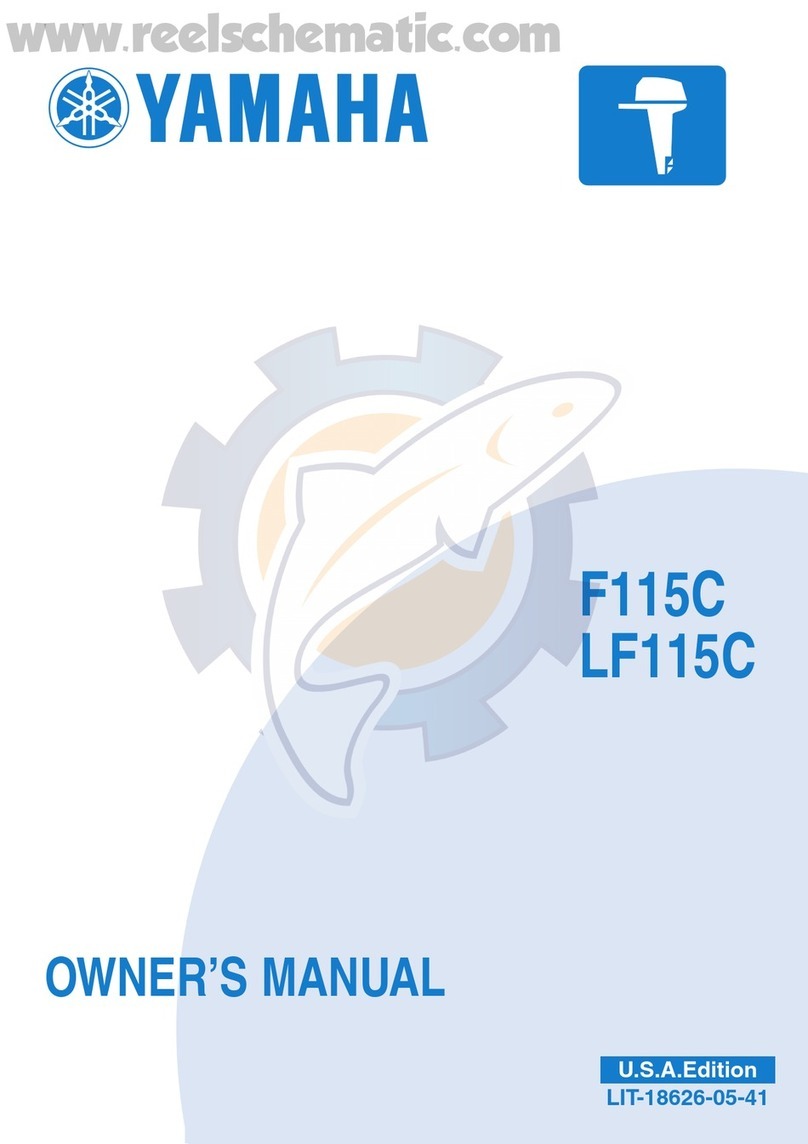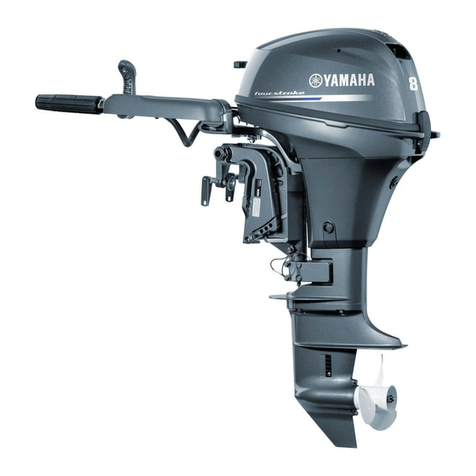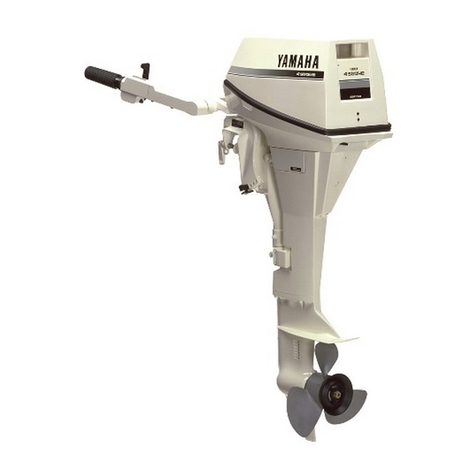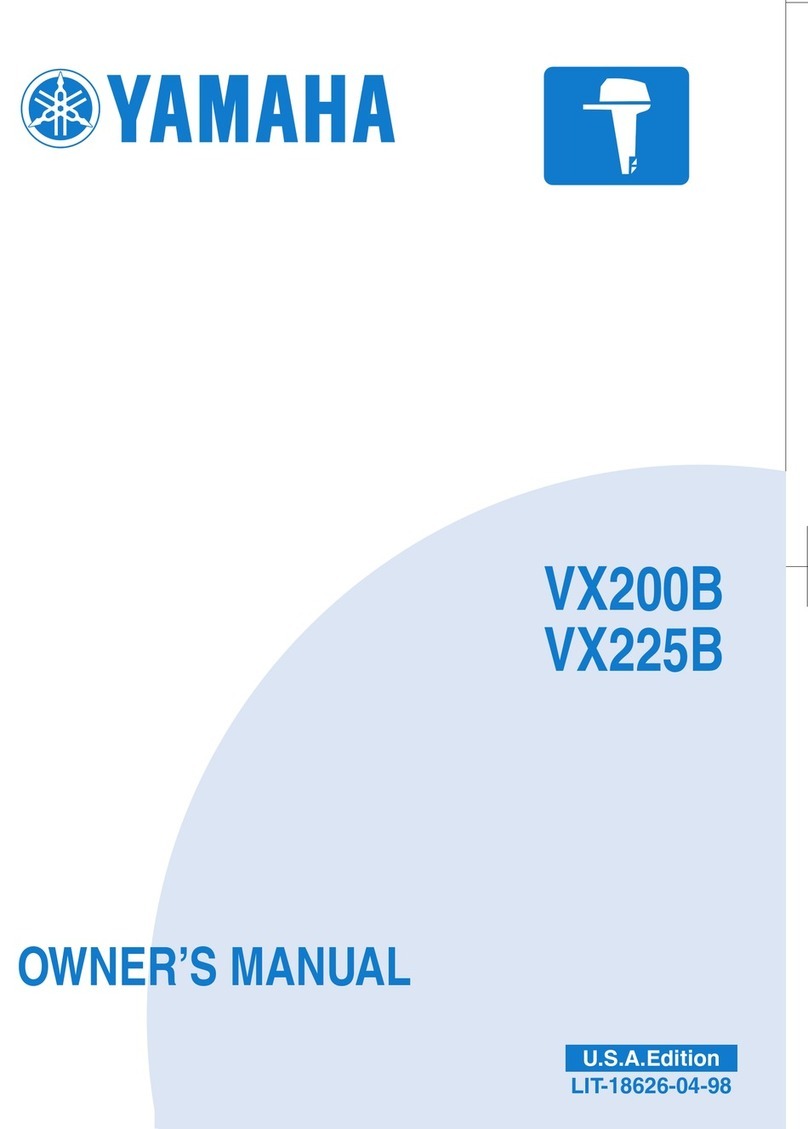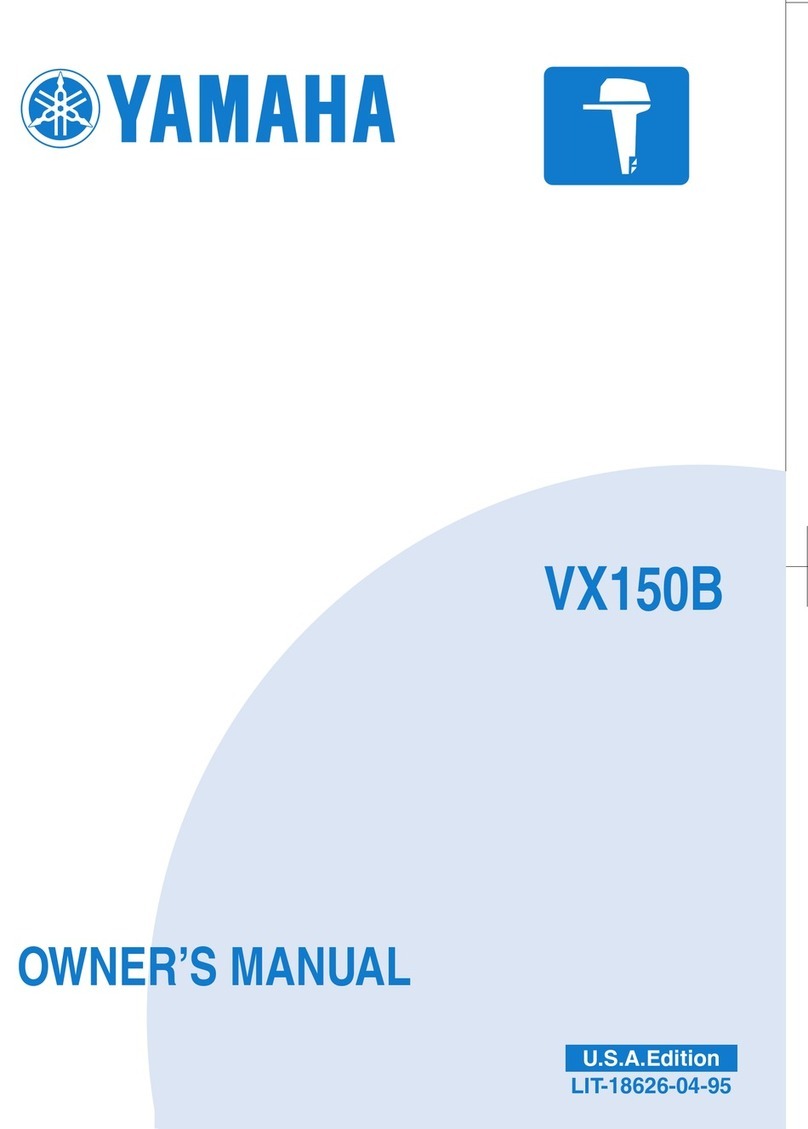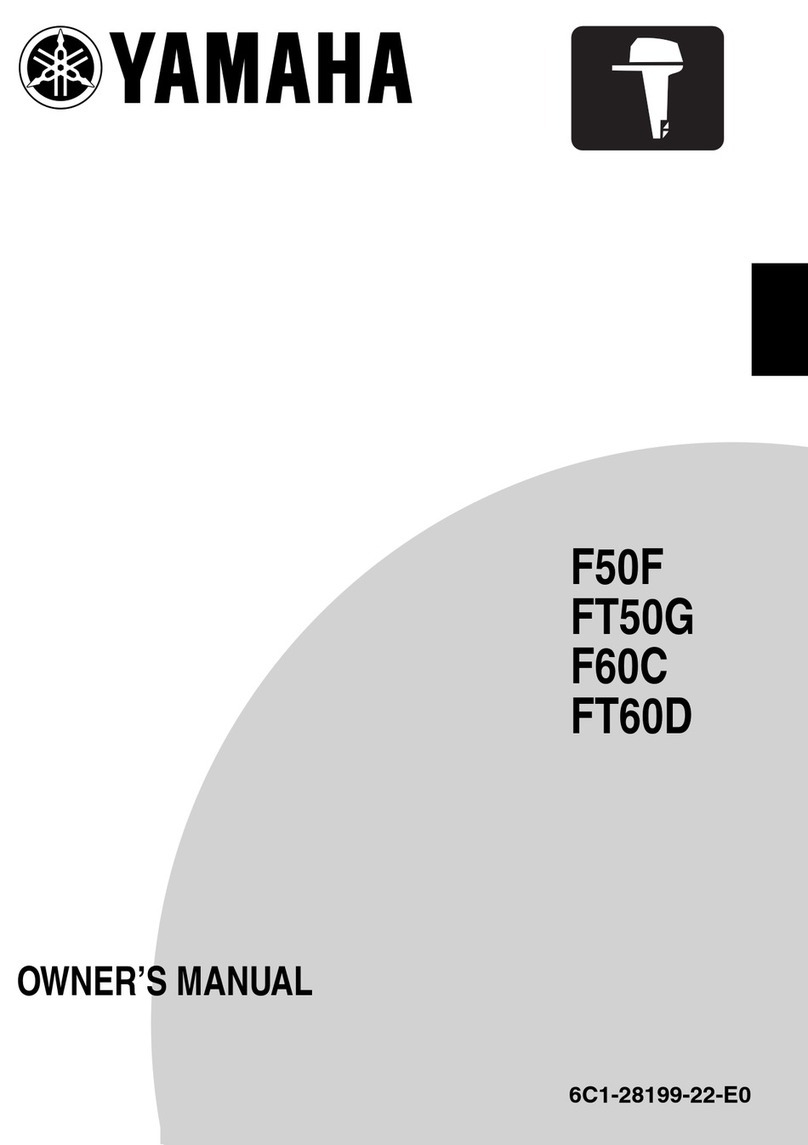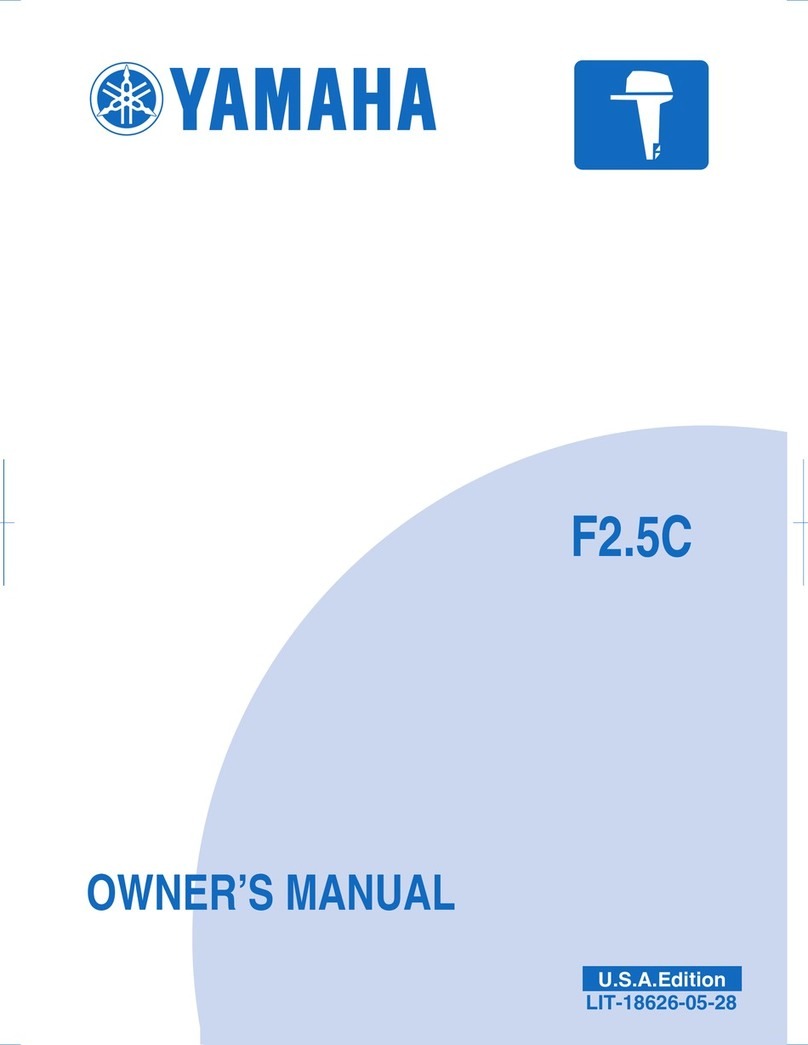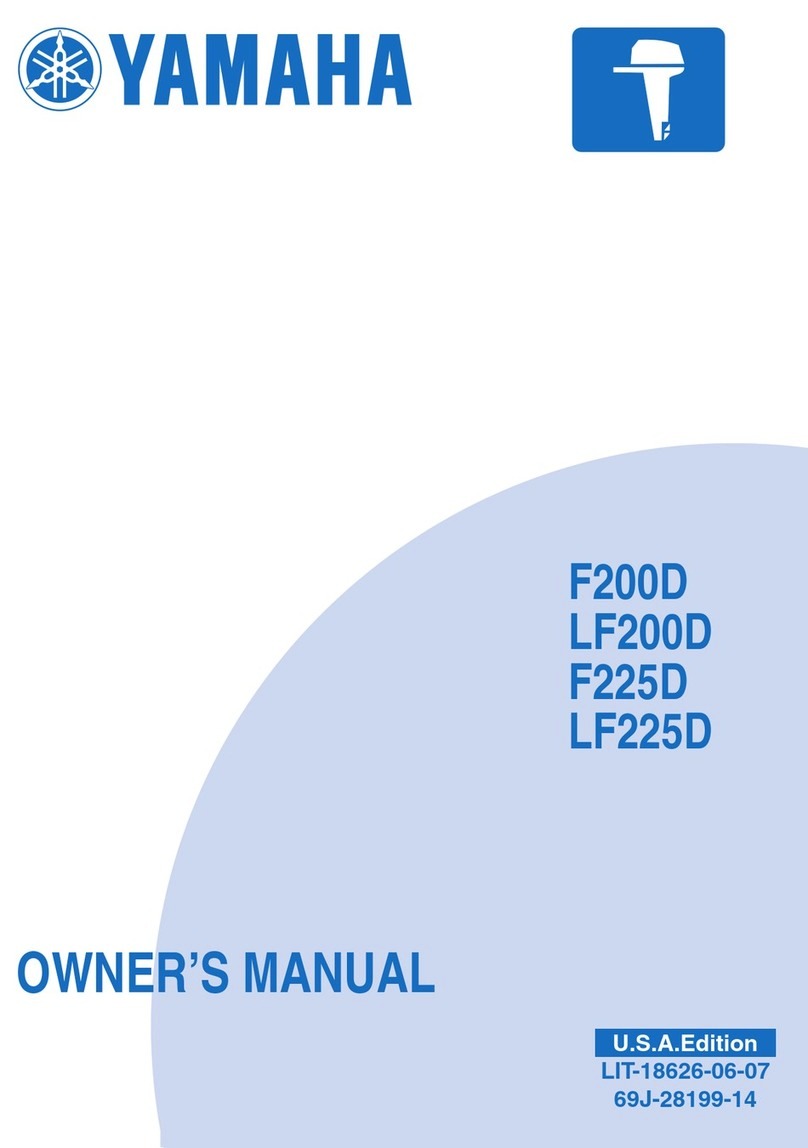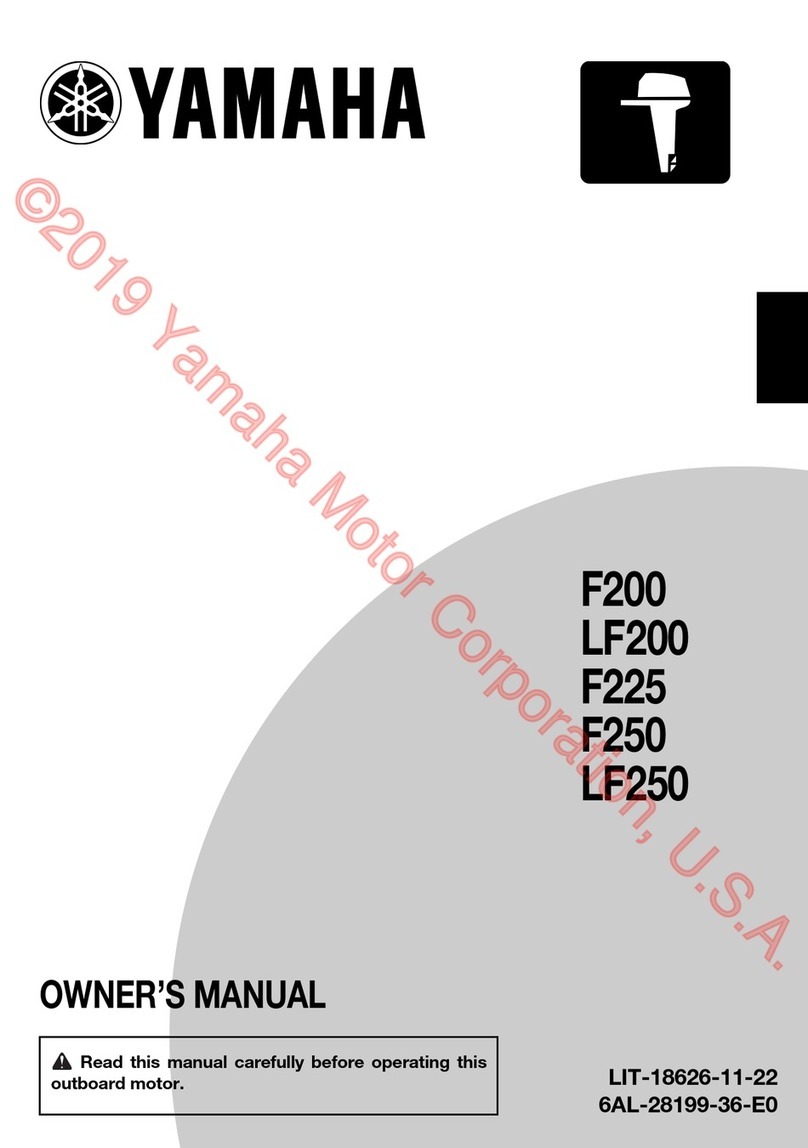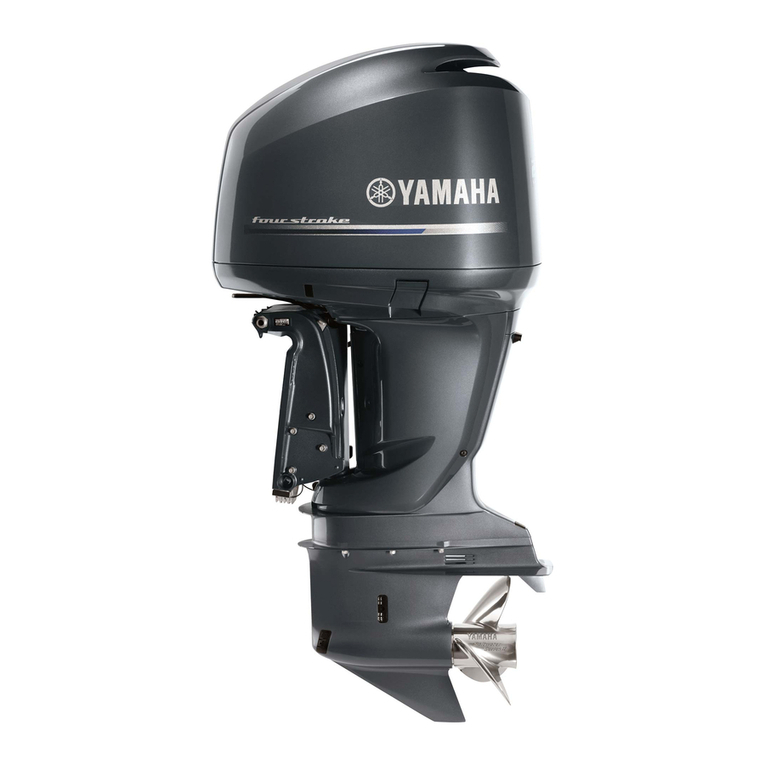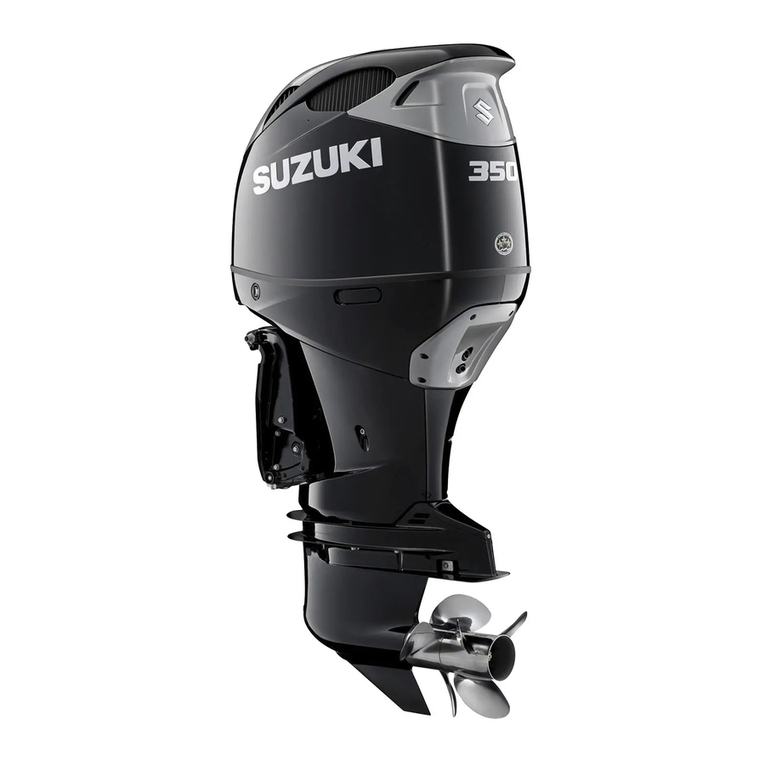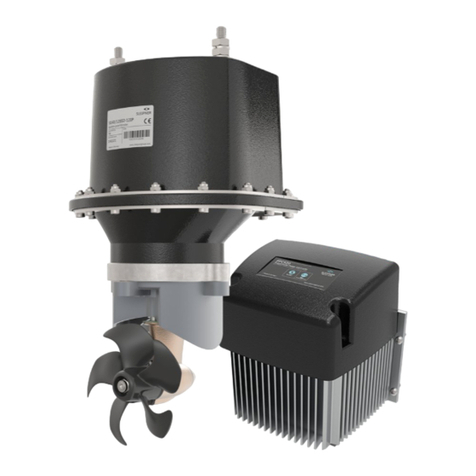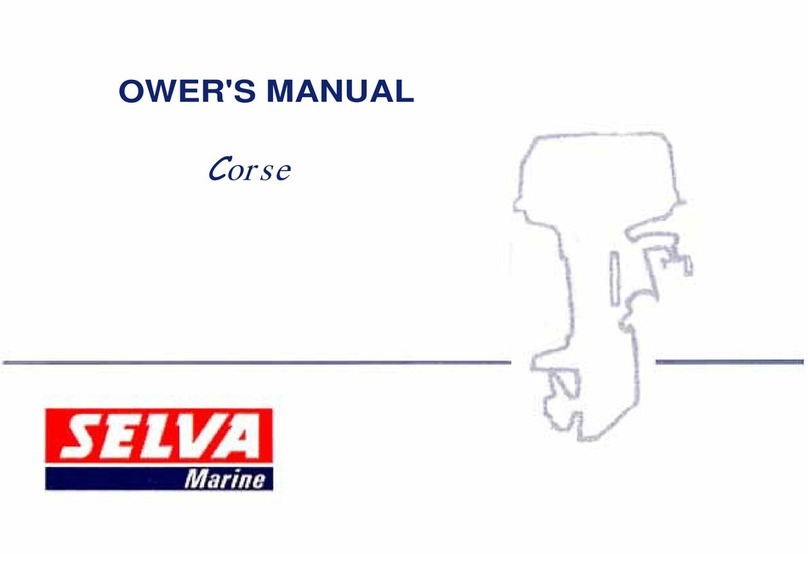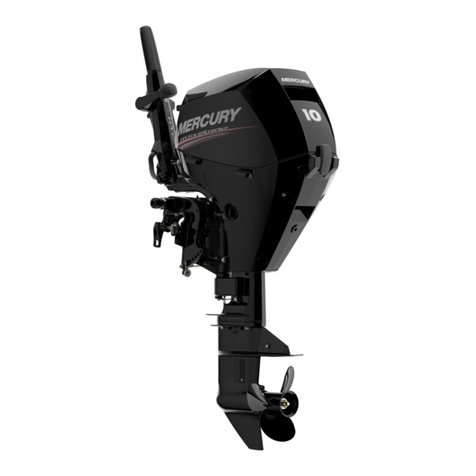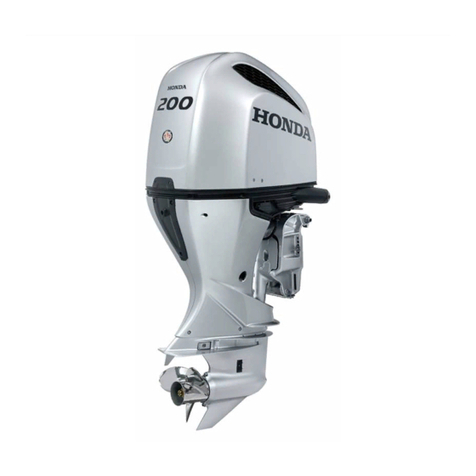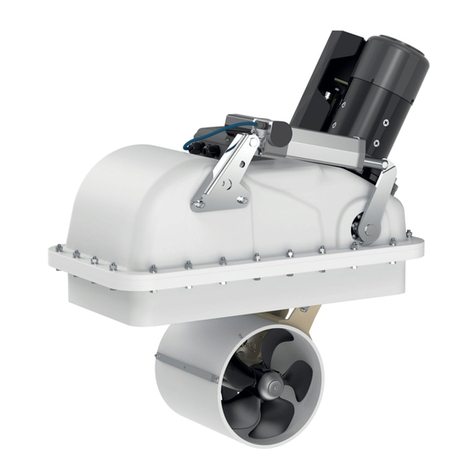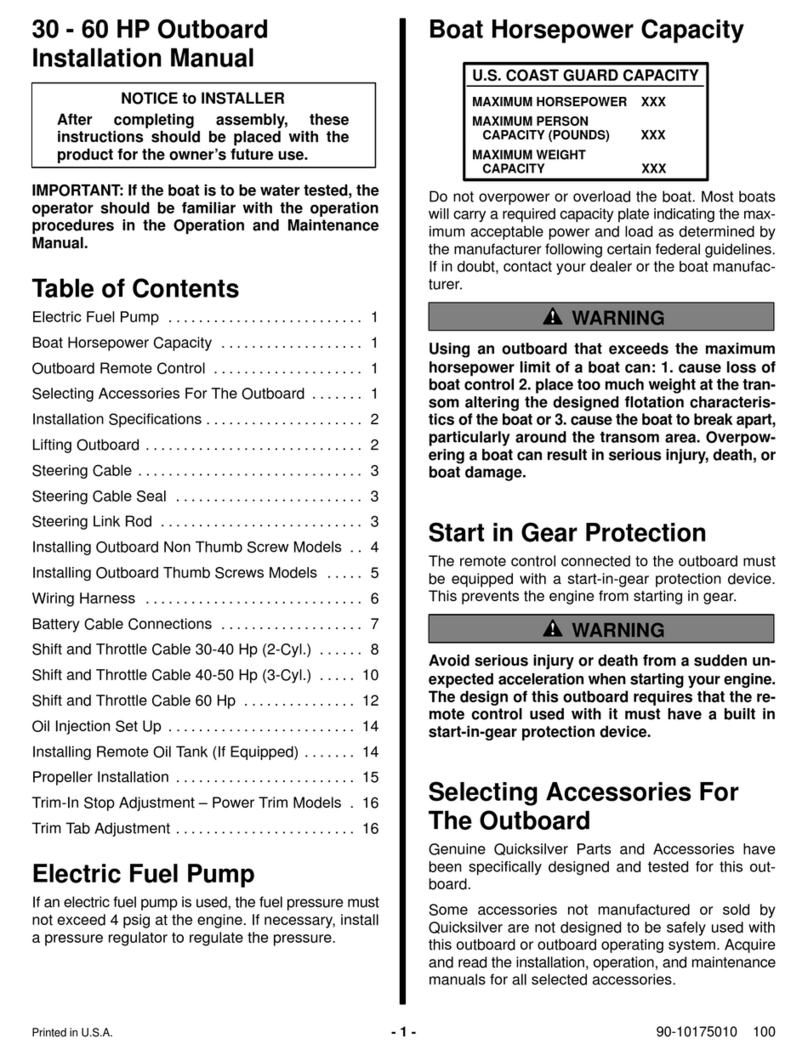
Table of contents
Power tilt switch................................ 33
Steering friction adjuster................... 33
Trim rod (tilt pin) ............................... 34
Tilt lock mechanism.......................... 34
Tilt support knob............................... 34
Tilt support bar ................................. 35
Power tilt unit.................................... 35
Cowling lock lever ............................ 35
Flushing device ................................ 36
Alert indicator ................................... 36
Instruments and indicators ............ 37
Indicators....................................... 37
Low oil pressure-alert indicator ........ 37
Engine control system.................... 38
Alert system .................................. 38
Low oil pressure alert ....................... 38
Installation ....................................... 39
Installation ..................................... 39
Mounting the outboard motor ........... 39
Clamping the outboard motor........... 41
Operation ......................................... 42
First-time operation ....................... 42
Fill engine oil .................................... 42
Breaking in engine............................ 42
Getting to know your boat ................ 42
Checks before starting engine ...... 42
Fuel level .......................................... 42
Removing top cowling ...................... 43
Fuel system ...................................... 43
Controls ............................................ 43
Engine shut-off cord (lanyard) .......... 43
Engine oil.......................................... 44
Outboard motor ................................ 44
Flushing device ................................ 44
Install top cowling ............................. 44
Checking power tilt system............... 45
Battery .............................................. 46
Filling fuel ...................................... 46
Operating engine........................... 48
Sending fuel (portable tank) ............. 48
Starting engine ................................. 50
Checks after starting engine ......... 58
Cooling water ................................... 58
Warming up engine....................... 58
Manual start and electric start
models .......................................... 58
Checks after engine warm up ....... 58
Shifting ............................................. 58
Stop switches ................................... 58
Shifting .......................................... 59
Stopping boat................................ 60
Stopping engine ............................ 60
Procedure......................................... 60
Procedure......................................... 61
Trimming outboard motor.............. 63
Adjusting trim angle for manual tilt
models .......................................... 63
Adjusting trim angle (power tilt
models) ......................................... 64
Adjusting boat trim............................ 64
Tilting up and down....................... 65
Procedure for tilting up (manual tilt
models) ......................................... 65
Procedure for tilting up (power tilt
models) ......................................... 66
Procedure for tilting down (manual
tilt models)..................................... 68
Procedure for tilting down (power tilt
models) ......................................... 68
Shallow water................................ 69
Cruising in shallow water (manual tilt
models) ......................................... 69
Power tilt models .............................. 70
Operating in other conditions ........ 71
Maintenance .................................... 72
Transporting and storing outboard
motor.......................................... 72
Dismounting the outboard motor ...... 72
Storing outboard motor..................... 74
Procedure......................................... 74
Lubrication........................................ 75
Cleaning and anticorrosion
measures ...................................... 75
Flushing power unit .......................... 76
Cleaning the outboard motor............ 77
Checking painted surface of
outboard motor.............................. 77
U6DR30E0.book Page 2 Friday, November 30, 2012 4:27 PM
